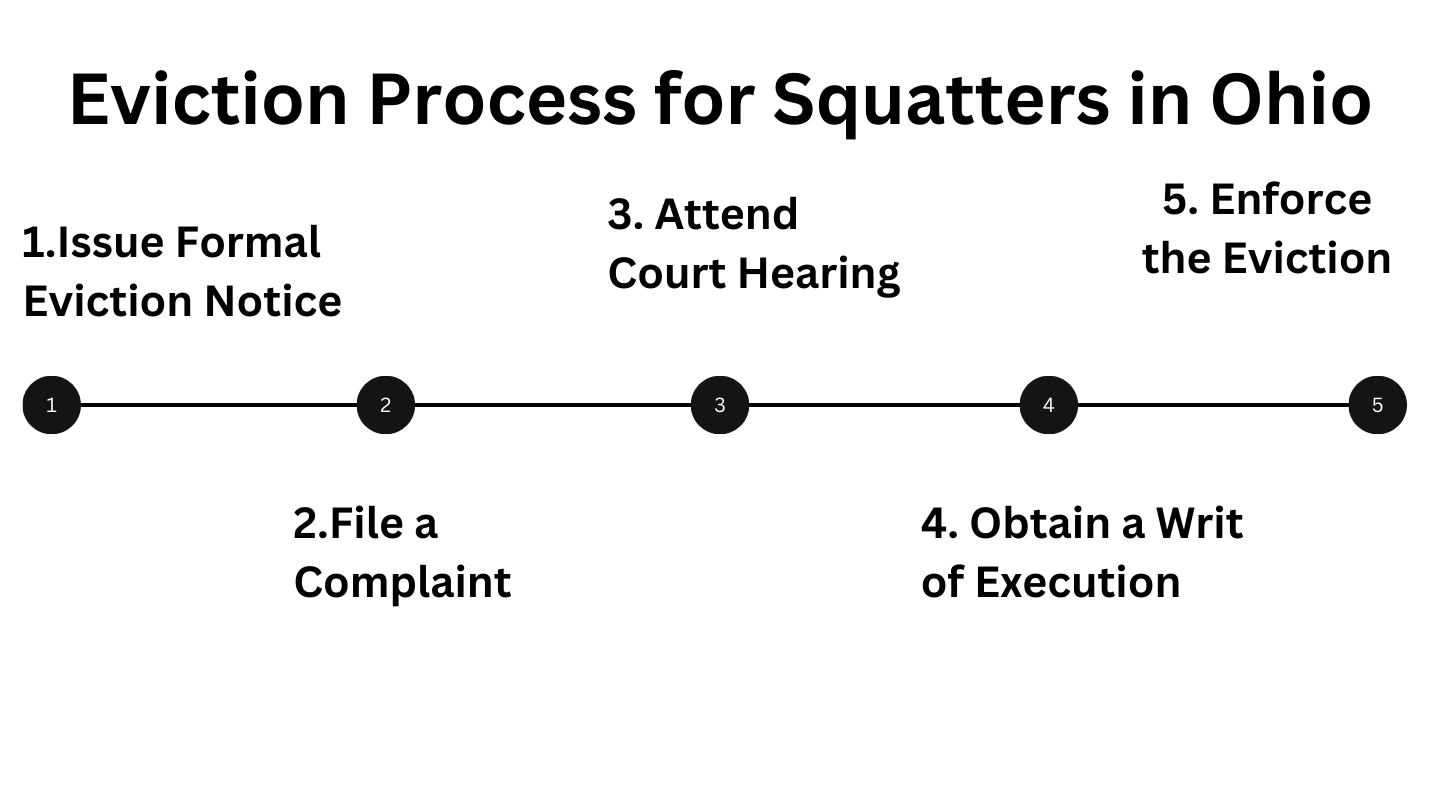Overview
Squatters in Ohio have rights that can pose significant challenges for property owners. This guide covers everything landlords need to know to protect their investments—from understanding squatters’ rights to navigating the complex legal processes involved in eviction and adverse possession claims.
In this guide, we’ll cover:
- What squatters’ rights are in Ohio
- The legal framework of adverse possession
- How to legally remove squatters through the eviction process
- Steps landlords can take to prevent squatters from claiming your property
By understanding these rights, property owners can take proactive measures to avoid legal disputes and safeguard their investments.
Understanding Squatter's Rights in Ohio
In Ohio, a squatter is an individual who occupies a property without the owner’s permission. Under specific conditions, a squatter can eventually claim legal ownership through adverse possession. It is important to distinguish between three types of occupants:
- Squatters: Those who occupy abandoned, vacant, or foreclosed properties without permission, potentially seeking to gain title through long-term occupancy.
- Trespassers: Individuals who enter or remain on a property without any legal right and can be removed quickly through law enforcement.
- Holdover Tenants: Renters who remain after their lease expires, sometimes shifting to a month-to-month tenancy or facing eviction.
Ohio law allows squatters to claim property only after they have met stringent criteria over 21 consecutive years. Understanding these differences is essential for developing an effective strategy to protect your property.
Adverse Possession in Ohio
Adverse possession is the legal doctrine that permits a squatter to gain legal title to property if they meet all of the following conditions continuously for 21 years:
- Actual Possession: The squatter must actively use and maintain the property in a manner consistent with ownership.
- Open and Notorious Possession: Their occupation must be visible enough to put the true owner on notice.
- Hostile Possession: The occupation is without permission and in opposition to the owner’s interests.
- Continuous Possession: The property must be occupied without interruption for the entire 21-year period.
- Exclusive Possession: The squatter must be the sole occupant, using the property as their own.
Because proving each of these elements is challenging, adverse possession claims rarely succeed without clear and convincing evidence.
Eviction Process for Squatters in Ohio
When unauthorized occupants are discovered on your property, following Ohio’s legal eviction process is critical. The standard steps include:

- Issue a formal eviction notice—typically with at least a three-day notice period.
- If the squatter refuses to leave, file a complaint under Ohio’s forcible entry and detainer laws.
- Attend a court hearing and present evidence (such as maintenance records and documented inspections) to support your case.
- If the court rules in your favor, obtain a writ of execution to enforce the eviction through local law enforcement.
Strict adherence to these legal procedures is essential, as any misstep may delay the process or even reset the adverse possession period.
Tips to Prevent Squatters
Preventing squatters from establishing adverse possession requires proactive measures. Consider these strategies:
- Regular Inspections: Frequently inspect vacant or underutilized properties.
- Visible Deterrents: Install “No Trespassing” signs and secure all access points.
- Maintenance: Keep the property well-maintained to discourage unauthorized use.
- Timely Property Taxes: Ensure that property taxes are current to reinforce your legal claim.
- Prompt Action: Serve eviction notices immediately if unauthorized occupancy is detected.
Implementing these steps can significantly reduce the risk of squatters fulfilling the criteria for an adverse possession claim.
Frequently Asked Questions
Final Thoughts
Understanding Ohio squatter's rights is essential for protecting your property and avoiding lengthy legal disputes. By staying informed about adverse possession laws and following proper eviction procedures, property owners can effectively safeguard their investments.
At Simpli Management, we offer tools like our Property Valuation Software to help you manage your real estate portfolio more efficiently. Explore our property management solutions today.

